無料ダウンロード sinus bradycardia with pac and pvc 302492-What to avoid when you have sinus bradycardia
13/6/17 · When this occurs in a pattern of bigeminy, the interpreter may be fooled into thinking that sinus bradycardia is present, because every other beat is a nonconducted PACSinus Brad, Tach, PAC, PVC Free download as Powerpoint Presentation (ppt), PDF File (pdf), Text File (txt) or view presentation slides online ECG10/5/16 · Six Second ECG Quiz 1B Version 12Question 13This ECG rhythm is called a) Sinus arrhythmia with a nonconducted PAC and a ventricular escape beat b) Sinus bradycardia with a nonconducted PAC and a PVC c) Wandering pacemaker with a nonconducted PAC and a PVC d) Sinus rhythm with a nonconducted PAC and a PVCQuestion 14This ECG rhythm is called a) Junctional rhythm with PACs b) Sinus

Ectopic Complexes And Rhythms Thoracic Key
What to avoid when you have sinus bradycardia
What to avoid when you have sinus bradycardia-The "PVC present" ECGs were then reviewed to categorize the patterns and morphologic characteristics of confirmed PVCs These characteristics included presence of multiple PVCs on a single 10sec ECG, presence of couplets or salvos (≥3 consecutive PVCs), presence of bigeminal or trigeminal rhythm, and presence of multiform PVC morA Sinus Rhythm with PAC's B Junctional Rhythm C 2nd Degree AV Block, Type I D 3rd Degree AV Block E Normal Sinus Rhythm with PVC's F Idioventricular Rhythm




Premature Junctional Complex Pjc Litfl Ecg Library Diagnosis
· Neonatal arrhythmias are classified as either benign or nonbenign Benign arrhythmias include sinus arrhythmia, premature atrial contraction (PAC), premature ventricular contraction (PVC), and junctional rhythm;While several predisposing conditions exist, PACs commonly occur in healthy young and elderly people26/9/19 · Sinus bradycardia happens when your sinus node generates a heartbeat less than 60 times in a minute There are many possible factors that can cause this to occur
We searched for nutrient deficiencies that could cause cardiac arrhythmias premature atrial contractions (PACs), premature ventricular contractions (PVCs), atrial fibrillation, and related sinus pauses, and found literature support for deficiencies of taurine and lA more subtle form of cardiomyopathy, arrhythmogenic right ventricular dysplasia, which typically presents with a left bundle branch PVC pattern, also needs to be considered, and clinical clues to this disorder are the presence of inverted Twaves in leads V1 through V3, the presence of low amplitude potentials, delayed slurred QRS in leads V1 and V2, and the presence of right29/4/18 · Yes Bradycardia and low BP indicate a nervous system imbalance Anx 30 can assess the function of the nervous system like no other test Pvc's are an escape rhythm of the heart from low rate (bradycardia) 57k views Answered >2 years ago Thank
Definition of sinus bradycardia Sinus bradycardia fulfills the criteria for sinus rhythm but the heart rate is slower than 50 beats per minute ECG criteria follows Regular rhythm with ventricular rate slower than 50 beats per minute Pwaves with constant morphology preceding every QRS complex Pwave is positiv in limb lead II Normal (physiological) causes of sinus bradycardiaBackground The relationships between hemodynamic consequences of premature ventricular contractions (PVCs) and development of premature ventricular contractioninduced cardiomyopathy (PVCCM) have not been investigated Objective The purpose of this study was to correlate concealed mechanical bradycardia and/or postextrasystolic potentiation (PEP) to PVCThe two beats are figuratively similar to two twins (hence bi gemini) For example, in ventricular bigeminy, a sinus beat is shortly followed by a premature ventricular contraction (PVC), a pause, another normal beat, and then another PVC In atrial bigeminy, the other "twin" is a premature atrial contraction (PAC)




Ecg Interpretation Criteria Review Axis Deviation Left Right




Acls Rhythm Test 2 A 74 Year Old Woman With Chest Pain Blood Pressure 192 90 And Rates Her Pain 9 10 Pdf Free Download
As opposed to PAC s, when the SA node (the natural pacemaker of the heart) gets interrupted, PVC s do not interrupt the SA node However, with a PVC the ventricles contract, which normally causes the impulse from the atria to be blocked from reaching the ventriclesA premature ventricular contraction is a relatively common event where the heartbeat is initiated by Purkinje fibers in the ventricles rather than by the sinoatrial node PVCs may cause no symptoms or may be perceived as a "skipped beat" or felt as palpitations in the chest Single beat PVCs do not usually pose a danger The electrical events of the heart detected by the electrocardiogram allow a PVC22/5/09 · Re Sinus Tachycardia / PAC's & PVC's Support YES, tachycardia can be related to reflux I just saw an Upper GI doctor who told me that From what he told me, a lot of people with irritable bowel syndrome have reflux and it irritates the nerves surrounding the heart and sometimes puts it into abnormal rhythm
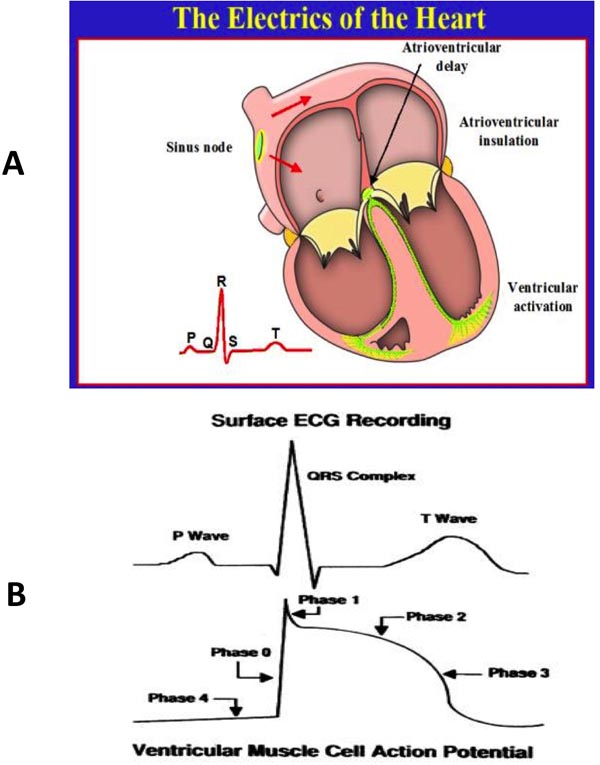



Neonatal Rhythm And Dysrhythmias Thoracic Key



Www Jstor Org Stable
So on to the PACs in and of themselves, unless you are really having an issue with them, they aren't life threatening at all If you were to see a PAC on an EKG rhythm strip, you'd see that it has the same form and shape as every other heartbeat, just that it's coming early, and then there's often a pause, then a stronger beatThese arrhythmias have no7 Bigeminal PJCs 8 Sinus bradycardia with trigeminal PJCs 9 Sinus rhythm with trigeminal PJCs 10 Sinus bradycardia with a PJC at 600 AM




Rhythm Strip Showing Sinus Bradycardia With Premature Ventricular Download Scientific Diagram



Premature Ventricular Contraction Wikipedia
27/4/21 · Sinus bradycardia caused by either heart block or sinus node dysfunction that is not reversible and is producing symptoms may be treated with a permanent pacemaker In some cases, such as partial AV block caused by a myocardial infarction (heart attack), a trial of a temporary pacemaker may be done to determine if the AV block is permanent or reversibleWhile the sinoatrial node typically regulates the heartbeat during normal sinus rhythm, PACs occur when another region of the atria depolarizes before the sinoatrial node and thus triggers a premature heartbeat The exact cause of PACs is unclear;PVCPrognosis •Associated with increased mortality •PVC on a 2minECG is associated with greater than twofold increase in mortality from coronary heart disease compared with those without any PVCs* •PVC on a 2minECG is associated with twofold increase in sudden cardiac death compared with those without PVCs**




Ectopic Atrial Rhythms Ecg Review Criteria And Examples Learntheheart Com




Ectopic Complexes And Rhythms Thoracic Key
A case where Lidocaine may not be used would be in Bradycardia If the SA node rate falls below 60 per minute, the heart may try to compensate by the use of PVC's Another case is after carefully studying the ECG tracing and determining that the underlying arrhythmia is Sinus Bradycardia, Lidocaine may not be used31/1/10 · Sinus bradycardia with first degree AV block Sinus bradycardia is evident from the long RR interval of 1280 ms, corresponding to a heart rate of 47 per minute PR interval is also prolonged at about 3 msec The combination can occur in vagotonic states or in those on beta blockers or other drugs which suppress both the sinus node and the AVSINUS ARRHYTHMIA with PVC Asked for Male, 39 Years I am suffering from Sinus ARRHYTHMIA and taking Cordarone 100 daily Recently I have done Holter 24 hrs and impression was many period of Sinus Bradycardia with frequent PVC My Echo cardiogram report is LVEF 72% and Trivial MR,TR My ECG is normal, Lipid Profile normal, Thyroid profile




Arrhythmias




Premature Atrial Complex Pac Litfl Ecg Library Diagnosis
· audible heart beat with sinus rhythm and ventricular extrasystoles / PVCs (ventricular bigeminus) see my other videos for an ECG reading with a ventricularVarious Rhythms with Multifocal PVCs 1 Normal Sinus Rhythm with Multifocal PVCs 2 Atrial Flutter with Multifocal PVCs 3 Normal Sinus Rhythm with Multifocal PVCs 4 Normal sinus rhythm with multifocal PVCsThe skipped or paused beats are actually a electrical malfunction of your left ventrical called PVC's (Premature Ventricular Contractions) and if your having tons of them a day like me, they can in fact weaken your heart and cause ventricular tachycardia that may progress into Vfib which is extreamly life threatening
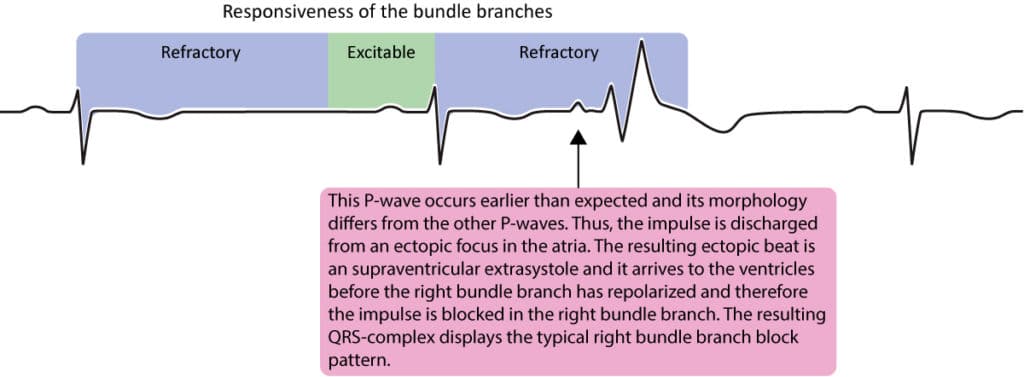



Aberrant Ventricular Conduction Aberrancy Aberration Ecg Echo




Pacs Heart Squad
Interpolated PVC on Sinus Bradycardia rhythm Sinus Rhythm with RonT Run of VTACH and couplets 1st degree block, nonconducted PAC, ventricular escape rhythm Idioventricular Rhythm Accelerated Idioventricular Rhythm monomorphic ventricular tachycardia Polymorphic VTACH/Torsades de Pointes9/2/19 · My cardiologist just told me I may have PAC My heart rate went from 125 when it woke me up to 216, called 911, they did an ecg and said it was sinus tacchayardia My rhythm went down to 1 and stayed there until Sunday when I went to the DR, registered me at 150 Upon sitting it went down to 1, after fluids and beta blockers went to 95It would be measurable depending on the underlying rhythm In step 5 we need to look at the QRS complex, so during the PVC it is 4 boxes or 016 seconds, it is about 2 boxes on the others or 008 seconds It is normal for the most part but during the PVC it is wider So in step 6 we identify the rhythm and we have sinus bradycardia with PVCs



Messages All 5 12 13 Pm 9 7 Gt 3 49 El Communitymed Org 2 Of 1 0 L Yearold Woman With An Altered Level Of Responsiveness Blood Pressure Course Hero




Ecg Learning Center An Introduction To Clinical Electrocardiography
I was eating anywhere from 25 balance/power bars a day, pre/post exercise, and just as a quick healthy snack Since completely eliminating those, I am normal sinus all the time If I'm desperate, and have one anyway, the arrythmias/PVC's return Bananas with peanut butter are now my preworkout energy source Keep working out!14/1/ · It would be measurable depending on the underlying rhythm In step 5 we need to look at the QRS complex, so during the PVC it is 4 boxes or 016 seconds, it is about 2 boxes on the others or 008 seconds It is normal for the most part but during the PVC it is wider So in step 6 we identify the rhythm and we have sinus bradycardia with PVCsFirst degree heart block is also present This encounter shows a fast rate over 100 bpm, with a regular rhythm and P waves, indicating sinus tachycardia The extremely long delay between the P wave and QRS indicates first degree heart block Additionally, ectopy is seen in this encounter, in the form of premature ventricular contractions
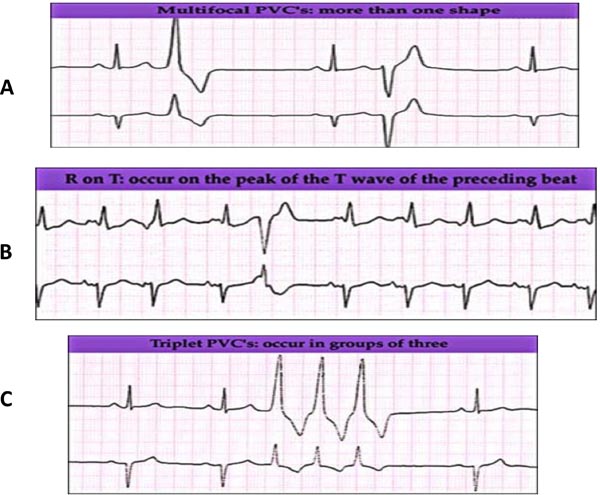



Neonatal Rhythm And Dysrhythmias Thoracic Key
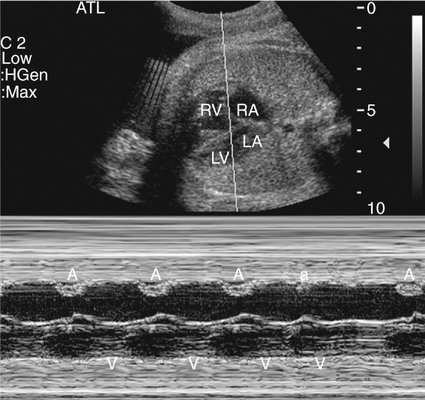



Fetal Arrhythmias Radiology Key
124 Sinus Bradycardia with 1st Degree AV Block of 26 seconds 125 Mobitz I Hearr Block (the last beat is actually a juntional beat) 126 Sinus rhythm with a 1st degree AV Block 127 3rd Degree Heart Block (Complete Heart Block) 128 2nd Degree AV Block Mobitz II (2 or more P waves for every QRS)9/4/19 · If an ectopic focus depolarizes prior to the arrival of the next sinus impulse, it may "capture" the ventricles, thereby producing a premature contraction Premature contraction are classified by their origin atrial (premature atrial contraction, PAC), junctional (premature junctional contraction, PJC), ventricular (premature ventricular contraction, PVC)These symptoms frequently occur at night or during relaxation, when the heart's natural pacemaker, the sinus node, slows down PAC patients may also experience dizziness or chest pain Treatment for symptomatic patients includes medications such as beta blockers or calcium blockers




Bigeminy Wikipedia




Atrial Junctional Dysrhythmias Ppt Download
3/7/21 · Studies of individuals free of cardiac disease show that sinus bradycardia, sinus pauses, and type 1 second degree atrioventricular (AV) block are common during sleep (table 1 1) 1 Sinus pauses up to two seconds in duration occur commonly in young people in association with sinus arrhythmia (fig 1 1) 1 This is seen more frequently in athletes, w1 and less frequently in1/6/21 · PACs are early (that is, premature) electrical impulses that are generated within the cardiac atria, but not from the sinus node PACs momentarily interrupt the normal sinus rhythm by inserting an extra heartbeat Because a PAC can reset the sinus node, there is usually a short pause before the next normal heartbeat occursSinus bradycardia is a type of slow heartbeat A special group of cells begin the signal to start your heartbeat These cells are in the sinoatrial (SA) node Normally, the SA node fires the signal at about 60 to 100 times per minute at rest In sinus bradycardia, the



Rhythm Strip Flash Card Practice




File Kelly Marchant Rn
SINUS bradycardia with frequent PVCNo AV block,no Ischaemic period Lipid, thyroid, kidney, liver profile are normalTaking Cordarone 100Rhythm analysis indicates normal sinus rhythm (NSR) at 68 bpm Premature atrial complexes (PACs), Premature junctional complexes (PJCs), and Premature ventricular contractions (PVCs) are present This encounter shows a normal sinus rhythm with a large amount of ectopy This causes an irregular looking rhythm that can easily confuse beginner monitor18/9/19 · Sinus bradycardia is a type of sinus arrhythmia in which your heart is beating slower than usual Normally, your heart requires a specialized group of cells to initiate the signal and produce a beat These cells are located in the sinoatrial node, which is firing the signals at a speed of 60 to 100 times per minute




Premature Contractions Pacs And Pvcs American Heart Association




Recordings During Palpitations A Recordings Of Patients With Previous Download Scientific Diagram
2/6/21 · Jun 2, 21 Home ECG Library ECG Library Homepage A premature atrial complex (PAC) is a premature beat arising from ectopic pacemaking tissue within the atria There is an abnormal P wave, usually followed by a normal QRS complex AKA Atrial ectopics, atrial extrasystoles, atrial premature beats, atrial premature depolarisationsKardia Advanced Determination "Sinus Rhythm with Premature Ventricular Contractions" indicates sinus rhythm with occasional premature ventricular contractions Premature ventricular contractions (PVCs) are extra heartbeats that originate in the bottom of the heart and usually beat sooner than the next expected regular heartbeatPremature beats that start in your heart's upper chambers are premature atrial contractions, or PACs Those that start in the lower chambers are premature ventricular contractions, or PVCs Watch an animation of a normal heartbeat




Premature Ventricular Complex Pvc Litfl Ecg Library Diagnosis




Premature Atrial Contractions Are They Benign Or Malignant The Skeptical Cardiologist
23/3/ · Bradycardia can be considered as a type of arrhythmia and arrhythmias generally give palpitation symptoms Mechanisms of palpitations Normally the atrial sinus suppress all other cardiac centers which are capable of generating heart beats (including ectopic cardiac cells which are responsible for ectopic or premature cardiac beats)9/5/13 · Nice, clear example of ventricular bigeminy with an underlying sinus rhythm We do not know from this strip if the sinus rhythm is a bradycardia at a rate of about 42 per minute, or if the underlying sinus rhythm is actually at a rate of 85 per minute, with every other sinus beat inhibited by the occurance of a PVC




Ecg Learning Center An Introduction To Clinical Electrocardiography
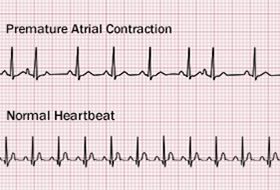



Premature Atrial Contractions Causes Symptoms Diagnosis Treatment




مممممممممممم A Sinus Bradycardia With Pacs B Chegg Com




Slides Show




Pacs Heart Squad




Premature Supraventricular Complexes Basic And Bedside Electrocardiography 1st Edition 09




The Six Second Ecg Squarespace Pages 1 6 Flip Pdf Download Fliphtml5



1
33063-3.fp.png)



Bradycardia Induced Pvcs Versus Exercise Induced Pvcs A Diagnostic Dilemma Journal Of The American College Of Cardiology
/premature-atrial-complexes-pacs-1746248-6f0cff8230b24003aa23f8bd582b4ef7.png)



Premature Atrial Complexes Pacs Causes And Treatment
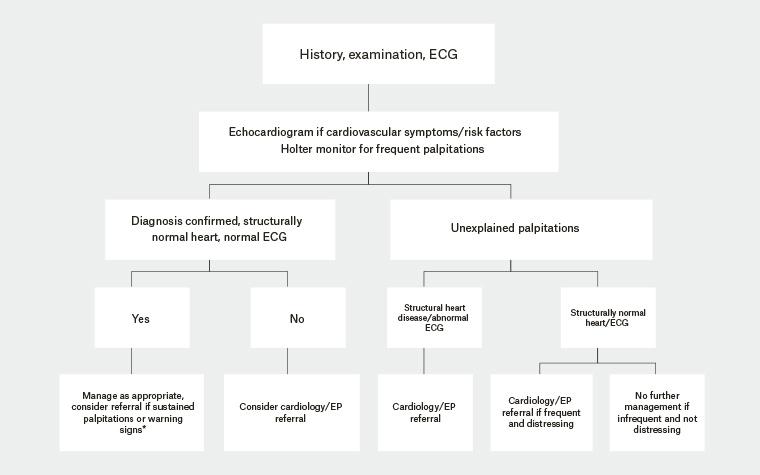



Racgp Approach To Palpitations




Ekg Interpretation




Pac Medicnote



Plos One Can Smartphone Wireless Ecgs Be Used To Accurately Assess Ecg Intervals In Pediatrics A Comparison Of Mobile Health Monitoring To Standard 12 Lead Ecg




Cancer Treatment Induced Arrhythmias Circulation Arrhythmia And Electrophysiology
:max_bytes(150000):strip_icc()/GettyImages-139820244-56a471823df78cf772826b4f.jpg)



Premature Atrial Complexes Pacs Causes And Treatment




Acls Rhythm Test 2 A 74 Year Old Woman With Chest Pain Blood Pressure 192 90 And Rates Her Pain 9 10 Pdf Free Download




Pacs Heart Squad




Sr With Pvc Youtube
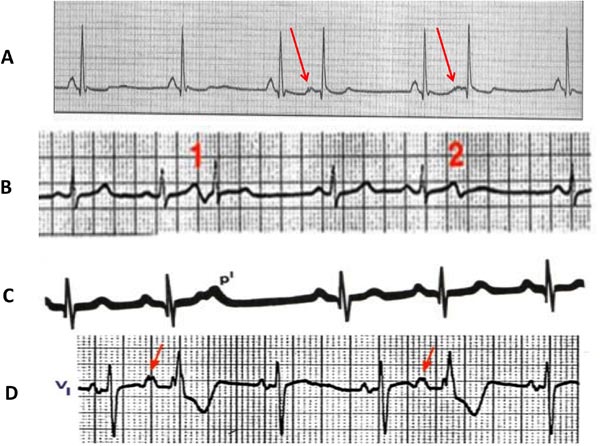



Neonatal Rhythm And Dysrhythmias Thoracic Key




Arrhythmias




Premature Ventricular Contractions Pvcs Ecg Review Criteria And Examples Learntheheart Com
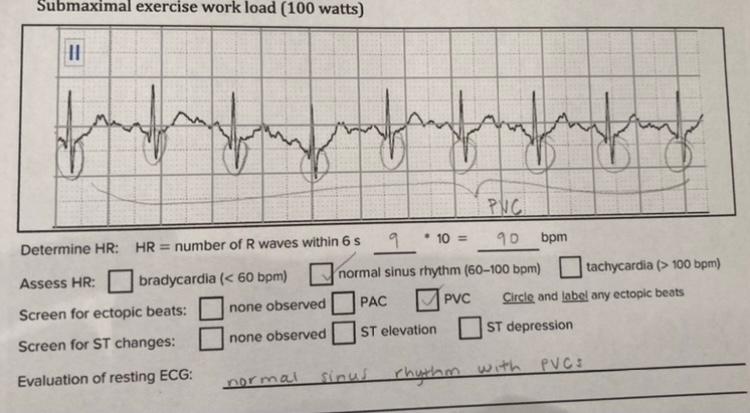



Solved A B Please Explain To Me How To Find These Answe Chegg Com




Premature Atrial Contractions Pacs Animation Youtube




Ekg Interpretation Cheat Sheet Heart Arrhythmias Guide Update




Cardiac Arrhythmias



1




Jnc Journal Of Neurocritical Care




Float Nurse Basic Ekg Rhythm Test 46




Pac Pjc Pvc Cardiac Electrophysiology Cardiac Arrhythmia




Premature Junctional Complex Pjc Litfl Ecg Library Diagnosis




Bigeminy Wikipedia




Acls Rhythm Test 2 A 74 Year Old Woman With Chest Pain Blood Pressure 192 90 And Rates Her Pain 9 10 Pdf Free Download




Cardiac Arrhythmia Reference Table Amazon Es Carol Jacobson Rn Mn Libros




Sam Ghali M D Most Sinus Bradycardia With Non Conducted Pacs They Do However Occasionally Conduct With A Long Pr And Then Are Followed By A Pvc T Co Xxuiefsbk8
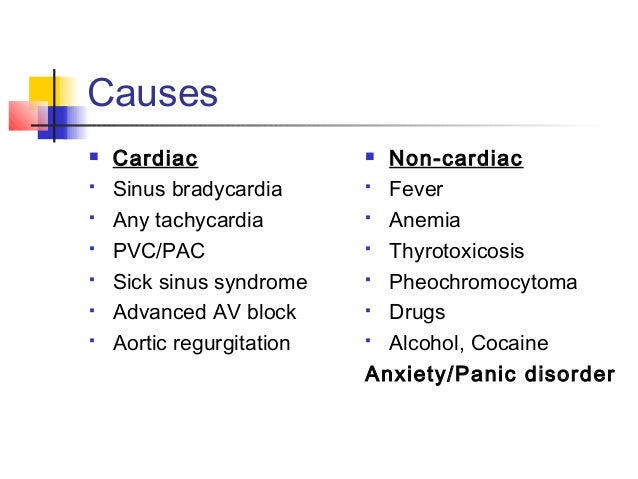



Approach To Chest Pain



Med Virginia Edu Emergency Medicine Wp Content Uploads Sites 232 15 10 Introduction To Ecg Rhythms Pdf




Premature Atrial Contraction Pac The Premier Ekg Resource For Medical Professionals Ekg Md Dr Anthony Kashou
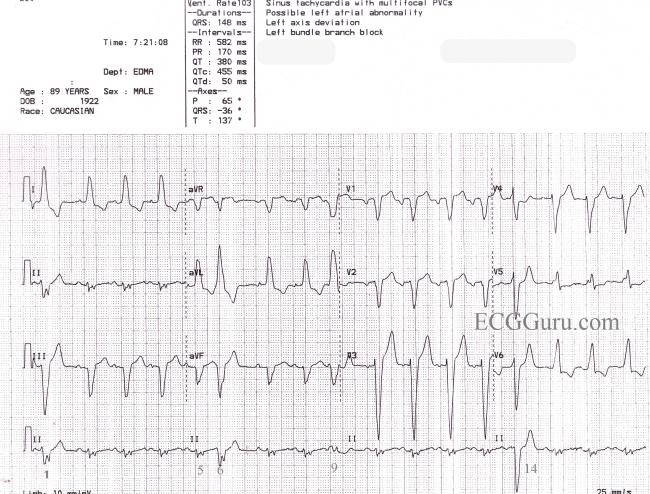



Sinus Rhythm With Left Bundle Branch Block Pvcs And Fusion Beats Ecg Guru Instructor Resources




Ekg Interpretation




Pacs Heart Squad




Sinus Brad Tach Pac Pvc Cardiology Heart




Premature Ventricular Contractions Pvcs Symptoms And Causes Mayo Clinic




Arrhythmias




Ventricular Bigeminy Ecg Example 1 Learntheheart Com



Ecg Of The Month A 44 Year Old Woman With History Of Htn And Nonischemic Cardiomyopathy Presents To Ed American College Of Cardiology



Rhythm Strip Flash Card Practice




Arrhythmias




Arrhythmias




Premature Ventricular Contraction An Overview Sciencedirect Topics
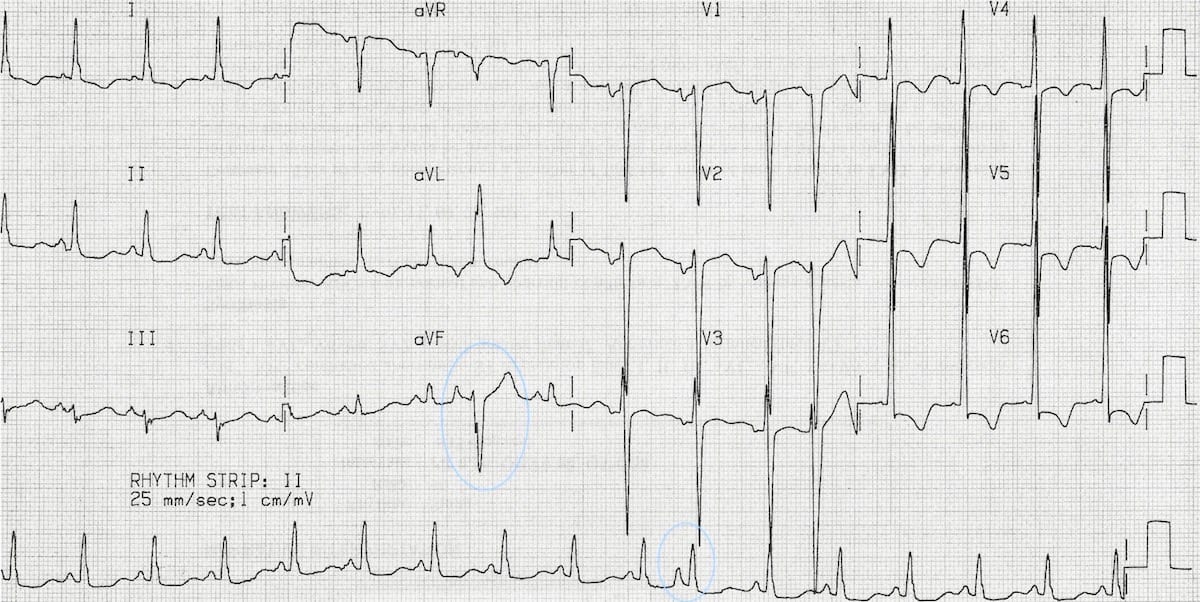



Premature Atrial Complex Pac Litfl Ecg Library Diagnosis




Rate And Rhythm Premature Ventricular Contraction Pvc Youtube




Cardiac Rhythm Disorders In Children Online Presentation




Sinus Brad Tach Pac Pvc
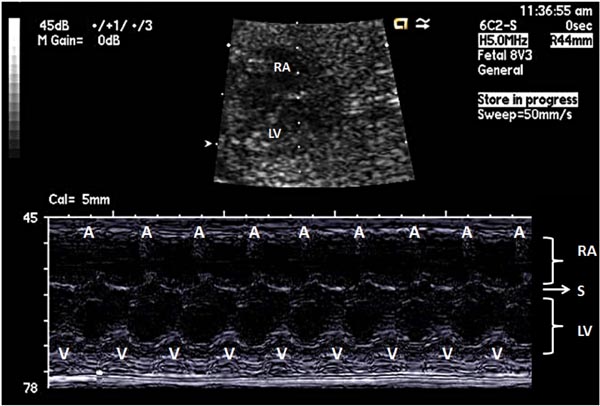



Fetal Arrhythmias Thoracic Key




Acls Rhythm Test 2 A 74 Year Old Woman With Chest Pain Blood Pressure 192 90 And Rates Her Pain 9 10 Pdf Free Download




Ecg Learning Center An Introduction To Clinical Electrocardiography




Ecg Module Quiz Questions Flashcards Quizlet




Arrhythmias




Float Nurse March 19




Sinus Arrhythmia What Is It



Q Tbn And9gcsztx Yiup6dgjcscknsguogls0mjbhalqbp1auz2 K1yzjb3ef Usqp Cau




Rhythm Cardiac Arrhythmia Electrocardiography




Cme Ecg S Flashcards Quizlet




Pac Medicnote




Peri Op Cardiac Arrhythmias Cause Recognition And Treatment W Presented By R1 林至芃 Ppt Download



1




Ecg Basics Sinus Bradycardia With A Premature Atrial Contraction Ecg Guru Instructor Resources




Premature Supraventricular Complexes Basic And Bedside Electrocardiography 1st Edition 09




Arrhythmias




Acls Rhythm Test 2 A 74 Year Old Woman With Chest Pain Blood Pressure 192 90 And Rates Her Pain 9 10 Pdf Free Download
/premature-atrial-complexes-pacs-1746248-6f0cff8230b24003aa23f8bd582b4ef7.png)



Premature Atrial Complexes Pacs Causes And Treatment




Pvc Ecg Example 2 Learntheheart Com




Cardiac Arrhythmias Ii Tachyarrhythmias Ppt Video Online Download




Float Nurse Ekg Rhythm Quiz 256




Arrhythmias And Ekgs Part 2 Outline Sinus Arrhythmia




Premature Atrial Contraction An Overview Sciencedirect Topics




Antrentranth A Normal Sinus Rhythm B Sinus Chegg Com




Premature Atrial Contractions Are They Benign Or Malignant The Skeptical Cardiologist




Float Nurse Ekg Rhythm Strip Quiz 17


コメント
コメントを投稿